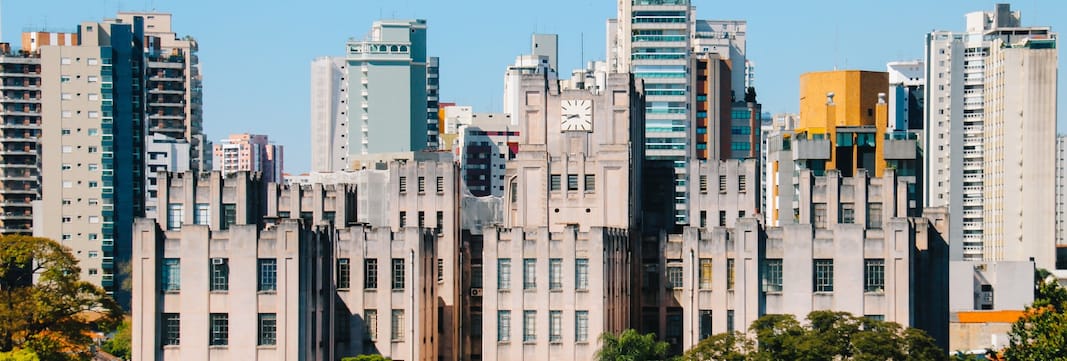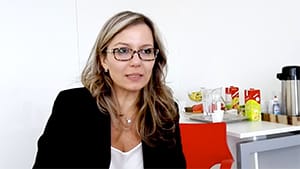Brazil
Introduction
«Brazil is a wonderful country ruled by a corrupt elite»With around 209.5 million inhabitants and a gross domestic product of 1,869 billion US dollars, Brazil is by far the largest economy in Latin America and the only Portuguese-speaking country in the region. In terms of average income per capita, the World Bank (2018) classifies Brazil as a country in the upper middle income bracket and in the United Nations Prosperity Indicator HDI (2018), the country ranks 79th worldwide. Brazil thus belongs to the group of countries with a high level of development in terms of life expectancy, educational level and standard of living. However, a Gini coefficient of 53.3% (2017) makes it clear that the income gap between rich and poor in Brazil is larger than in only a few other countries worldwide.
Brazil is a country with a large domestic economy in which a large part of the division of labor takes place domestically. This is evident in the fact that the foreign trade ratio in 2018 is only 29.1%. In the same year, imports of goods and services amounted to almost 267 billion US dollars and exports to 277billion US dollars. Foreign direct investment in Brazil amounted to 684 billion US dollars. Over one third of all foreign investments in Latin America (36%) were thus made in Brazil.
Since 2014, Brazil has been shaken by a profound political and economic crisis triggered by the corruption scandal surrounding the parastatal oil company Petrobrás. According to data from Transparency International (2019), corruption is perceived as widespread in Brazil. In the organization's corruption index, Brazil ranks 105th out of 180 worldwide.

According to Human Rights Watch (2017), chronic human rights problems characterize the Brazilian security apparatus, including extrajudicial killings by policemen, overcrowding of prisons, and torture and ill-treatment of prisoners. There are also repeated cases of human rights violations documented by the business community. These include cases of forced labor and abusive working conditions under conditions similar to slavery. In addition, activists who stand up for the rights of the landless and indigenous population face massive attacks, threats and intimidation. In 2018, according to Reporters Without Borders, no journalist was killed and one journalist is imprisoned in Brazil in connection with his activities. The country ranks 105th in the press freedom rankings.
In Brazil, 91% of the population’s municipal waste (2012) is collected and 1% thereof is being recycled (2000). 97.5% of the population have access to basic drinking water services (2015), with a marked gap between urban areas (99.3%) and rural areas (86.6%). No statistics are available on the proportion of the population with access to safe drinking water sources. 45% of the population is connected to a sewage collection system (1993).
Brazil's CO2 emissions per capita in 2014 were 2.6 tonnes, below both the global average (5.0 tonnes) and the Latin American average of 3.1 tonnes.
Using selected examples, the next sections describe the challenges Brazilian companies face in the areas of human rights/working conditions, the environment and corruption. In addition, it is exemplarily presented which measures companies take to meet their social responsibility.

Human rights
«Work is not lacking, but there are no jobs»Although slavery is forbidden in Brazil and is prosecuted, there are always cases of exploitative employment relationships and modern slavery. Such human rights violations occur, for example, in the fields of sugar cane or fruit plantations as well as in soy cultivation. Work on the plantations is often the only one that exists in rural regions. Occupational safety precautions are often inadequate and the workers are housed under inhumane conditions.
In addition, the Brazilian agricultural sector is characterized by numerous land conflicts. Unresolved ownership issues and the advance of the agricultural border have led to the expulsion of small farmers and the indigenous population. In Brazil, the indigenous population is largely marginalized. The lack of security of their land rights repeatedly leads to violent clashes.
However, there are also examples of companies that proactively cooperate with the indigenous population and, for example, provide them with market access. This includes a family business in the agritourism sector. The indigenous families from a nearby reserve can sell their handicrafts on the site of the eco-farm and do not have to pay any commission for this. Once a year the farm also hosts a Week of Brazilian Indigenous Peoples, during which numerous cultural events take place. This cooperation provides the indigenous community with an adequate livelihood based on their own cultural identity.

Environment
«Responsible management must be integrated into the core business»Companies often perceive environmental regulations as bureaucratic hurdles and cost drivers. Notwithstanding, there are also examples of companies proactively looking for innovative and creative solutions to anchor the issue of environmental and climate protection in their core business. These companies use the topic of responsible management as an innovation driver and differentiator. Their aim is not only to protect the environment and the climate, but also to be economically successful as a company.
A Brazilian family business from the tourism industry is trying to implement this consistently and has thus produced numerous innovations in recent years. For example, the company uses the heat of the coal fire in the traditional Churrasqueira to generate hot water for the hotel and restaurant business. A suitable name for the method was also invented: “Banho gaucho”. With innovations such as this, the company is differentiating itself in the Brazilian tourism market and has thus been able to grow successfully, even in a difficult economic environment. The innovation also helps the company save several thousand US dollars in energy costs every month.


Corruption
«The law applies to all»Due to the corruption scandal surrounding the parastatal oil company Petrobrás and other former flagship companies, which has been under review since 2014, the fight against corruption is very much present in the Brazilian public and media today. This has led to a broad consensus on the need to fight corruption as it diverts resources from education, healthcare and other important government services. The country only has a realistic chance of achieving the United Nations' sustainable development goals if it succeeds in curbing corruption on a sustainable basis.
In addition, many entrepreneurs and managers seem to have recognized that corrupt behavior can have serious and devastating consequences for businesses. In addition to raising awareness, companies have taken a number of concrete steps to improve their corporate governance principles. A large number of training courses, conferences, seminars and publications are offered to help companies do this.
To assist Brazilian companies in this process, a large multinational company once a month invites six to eight companies to show guests how a compliance system works in practice and how it can be adapted and implemented. Around 500 companies have already taken part in this special type of business management. In addition, the company has developed special materials for schools and universities to raise awareness of corruption prevention among pupils and students.


Conclusion
